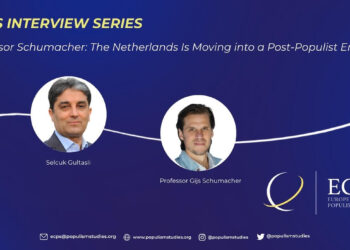In the wake of Romania’s high-turnout 2025 presidential election, Dr. Vladimir Bortun offers a powerful analysis of how deep-rooted economic insecurity—fueled by decades of neoliberal reform—has driven support for the far right. Despite a centrist victory, nationalist George Simion’s strong performance underscores a broader post-crisis populist consolidation. In this exclusive ECPS interview, Dr. Bortun explores the AUR’s appeal among the diaspora and rural poor, the ideological vacuum left by the mainstream left, and how Romania exemplifies a wider European shift from democratic to authoritarian neoliberalism. A must-read for anyone interested in the structural dynamics behind Europe’s populist realignment.
Interview by Selcuk Gultasli
Romania’s 2025 presidential election represented a pivotal moment for the country’s democratic trajectory and its place within the broader European political landscape. In a high-stakes runoff, centrist candidate and pro-European reformer Nicușor Dan secured a clear victory over George Simion, the leader of the far-right Alliance for the Union of Romanians (AUR). With the highest voter turnout in a quarter-century and the specter of a previously annulled election looming large, the vote was widely interpreted as a referendum on Romania’s political future—particularly on the tension between liberal democracy and the rising tide of far-right populism. Despite Simion’s defeat, his strong first-round performance and continued popularity signaled a deeper, more durable undercurrent of reactionary politics in Romania.
Against this backdrop, the European Center for Populism Studies (ECPS) spoke with Dr. Vladimir Bortun, a lecturer at the University of Oxford and an expert on European politics, transnational party networks, and left-populist movements. With unique insight into both the structural drivers and class dynamics underpinning political realignments in Romania and beyond, Dr. Bortun offers a compelling analysis of how economic insecurity—rooted in decades of neoliberal reforms, mass emigration, and systemic inequality—has created fertile ground for the rise of the far right.
In this wide-ranging interview, Dr. Bortun reflects on how the socioeconomic legacies of Romania’s post-1989 transition have failed to deliver on their liberal democratic promises, especially for large swaths of the population living in poverty or working precariously. He argues that this deep economic discontent, compounded by the collapse of credible left-wing alternatives and the ideological convergence of the center-left and center-right, has allowed far-right actors like Simion and AUR to present themselves as anti-establishment voices—even as their own policies serve entrenched economic elites.
Crucially, Dr. Bortun situates Romania within a broader European context, where authoritarian neoliberalism is increasingly replacing the post-Cold War liberal consensus. He draws instructive comparisons with Poland, France, and Southern Europe, exploring how the mainstreaming of far-right rhetoric and policy by centrist parties—particularly around immigration and national sovereignty—has reshaped the ideological field.
By examining the rise of AUR’s support among the Romanian diaspora and among marginalized rural voters, Dr. Bortun challenges simplistic narratives about populism and brings attention to the lived realities of class, exclusion, and political abandonment. As he makes clear, the battle over Romania’s future is not only political or cultural—it is fundamentally about economic power, ownership, and whose voices get to shape the nation’s path forward.
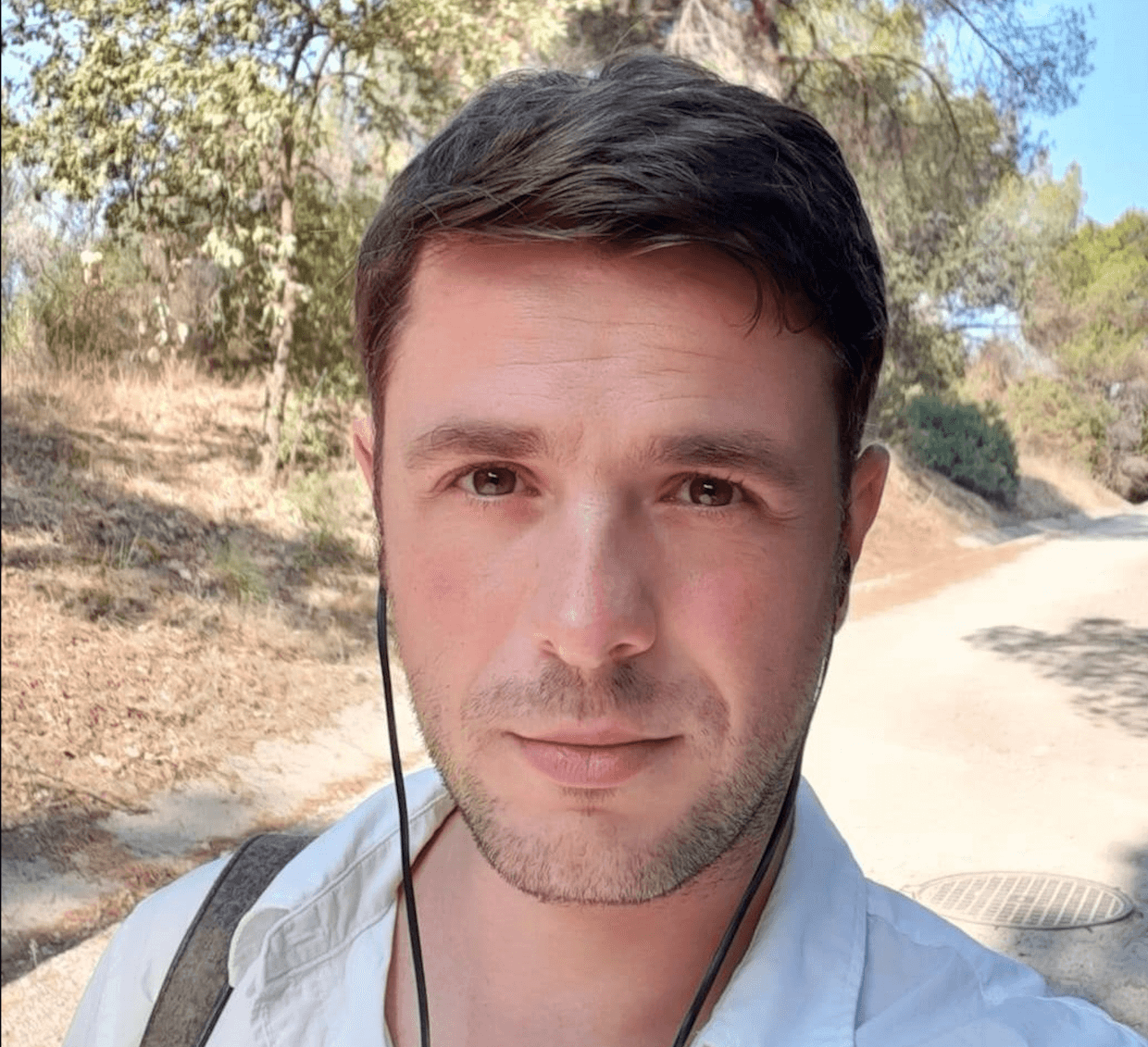
Here is the lightly edited transcript of the interview with Dr. Vladimir Bortun.
Neoliberalism Created the Perfect Storm
Professor Vladimir Bortun, thank you so very much for joining our interview series. Let me start right away with the first question: Given Simion’s stronger-than-expected first-round lead and his continued appeal despite being defeated in the runoff, how would you theorize the durability of far-right populism in Romania beyond the electoral cycle? Can this be conceptualized within a broader post-crisis populist consolidation rather than a mere reactionary surge?
Dr. Vladimir Bortun: That’s a very important question. First of all, thank you again for the invitation. I should clarify that I’m not a professor yet—just a lecturer.
To go straight into the topic: recent academic literature has shed significant light on the key drivers behind the rise of the populist far right across borders. While there are, of course, multiple factors at play—and we will explore some of them—the most consistent driver across all contexts is economic insecurity, rooted in decades of neoliberal globalization.
These conditions have only worsened in the aftermath of the 2007–2008 crisis, which—as you mentioned—took a particularly austerity-driven form in Europe, shaped by how both European institutions and national governments responded. Romania was no exception.
To provide some context on the socioeconomic situation in Romania: after 35 years of neoliberal capitalism and roughly 18 years since joining the European Union—which has brought certain benefits but, for many Romanians (including those who have supported the far right), has failed to fulfill its initial promises—we are now facing deeply concerning indicators.
Approximately 45% of the population lives in poverty or on the brink of it—the highest percentage in the European Union, meaning nearly half the population is affected. Romania also ranks first or second in terms of in-work poverty. Moreover, it allocates the lowest—or among the lowest—shares of GDP to healthcare, education, and social protection.
After Ireland, Romania has the lowest tax collection capacity in the European Union. It also maintains some of the lowest tax rates in the EU. There is a 10% flat income tax, which disproportionately affects workers and employees—particularly because, in addition to this tax, they are also responsible for paying social contributions that were previously covered by employers. These include contributions to healthcare and pensions.
Unsurprisingly, this flat tax structure primarily benefits the wealthier segments of society. In addition, Romania has a corporate tax rate of 16%, one of the lowest in the European Union.
These are clearly the right conditions for economic insecurity—fertile ground for the rise of the far right. But it’s not only the poorest in society that we should consider. Economic insecurity affects various social classes and class fractions.
In Romania, it has had a particularly strong impact on the petty bourgeoisie—small and medium-sized entrepreneurs—who have been closing down their businesses at an increasing rate over the past few years, especially since the COVID-19 pandemic. I believe the pandemic represents another critical crisis that must be factored into any explanation of the far right’s rise. These small and medium entrepreneurs, going bankrupt by the thousands, form a core component of the far right’s social base.
Nationalism Meets Neoliberalism in a Peripheral Economy
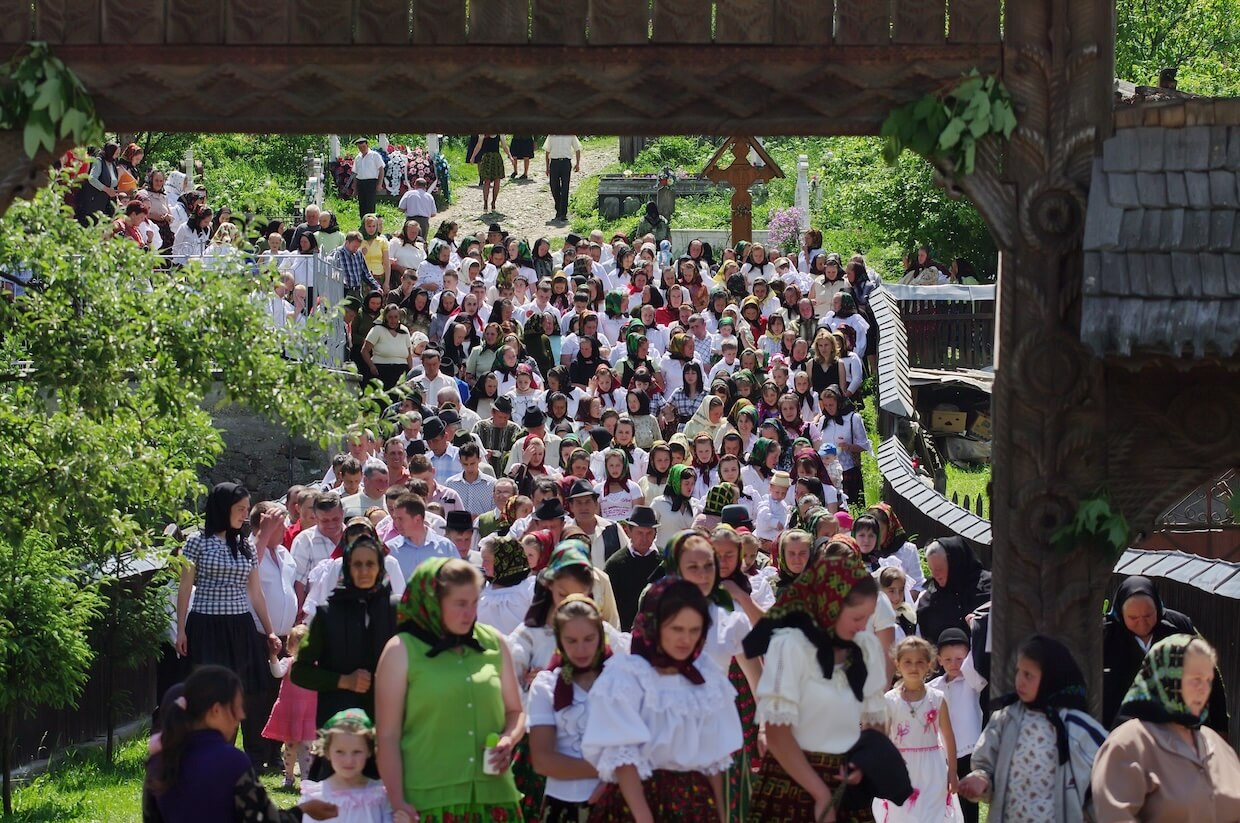
How would you situate the AUR’s electoral messaging—particularly its nationalist-economically neoliberal synthesis—within the wider genealogy of post-2008 far-right formations in Europe? Is there a uniquely Romanian hybrid emerging, or does AUR largely mirror external templates?
Dr. Vladimir Bortun: There are certain similarities with the broader profile of the European far right. There is clearly this populist discourse they employ, which is built on the dichotomy between the “pure people” and the “corrupt elite.”The elite, as in other countries, is portrayed as those who have sold out our country—who don’t represent the interests of our country but rather represent foreign interests, globalist interests. And of course, other undesirable categories in society are targeted as well, such as the LGBTQ community and immigrants from non-European countries, who have started to come to Romania in recent years as cheap labor—these are the usual suspects in far-right rhetoric.
At the same time, there is an element of truth in relation to the domination of foreign interests in Romania. Foreign companies hold a dominant position in key sectors of the economy, such as the energy sector, manufacturing—especially the auto industry—and the banking sector. They make huge profits in Romania, which they then repatriate to their home countries rather than reinvesting, even partially, in the Romanian economy.
Foreign banks, in particular, are guilty of this kind of profit repatriation from Romania, and this has generated a level of dissatisfaction that can also be observed in other countries. For example, in Poland, there is a very interesting study on the role of “comprador bankers” in the rise to power of the Law and Justice Party (PiS), which governed the country for about a decade. These comprador bankers were Polish managers of foreign bank subsidiaries who eventually came to realize that these foreign banks were operating in Poland solely to extract profit—profits that were then repatriated to their home countries, rather than being reinvested in the Polish economy. They did not, for instance, offer affordable or advantageous loans to Polish businesses. In response, some of these managers rebelled against the model and aligned themselves with the national capitalist hegemonic project advanced by PiS.
So, there is an element of what I would call the “comprador professional managerial class” that has served foreign capital in these peripheral Central and Eastern European countries, now fighting back against this foreign capital domination—in coalition with the domestic capitalist class. Particularly, those fractions of the domestic capitalist class that are trying to secure the sectors where they are still dominant—especially in Romania, such as real estate, construction, and hospitality.
The party you mentioned—AUR—led by Simion, who lost the election, is heavily funded by segments of the domestic capitalist class, particularly in the construction, real estate, and hospitality sectors. These actors are seeking to ring-fence and protect their interests from foreign capital, while also attempting to gain state power in order to advance those interests.
This project of the national bourgeoisie reclaiming state power is a common regional feature across Central and Eastern Europe. Hungary, Poland, and now Romania exhibit this pattern. I would even argue that it extends beyond the region—to Turkey, for example. Correct me if I’m wrong, but the Erdogan project seems to share similar characteristics, as far as I understand.
Now, regarding the distinctive features of the Romanian case—since I’ve already outlined some of the common regional characteristics—there are two aspects that stand out about the Romanian far right. I would highlight these two features, and perhaps we’ll focus on one of them in the following questions.
The first is their particular appeal to the diaspora. The diaspora represents a significant portion of their social base, and I’ll elaborate later on why they’ve been so successful in mobilizing this group.
The second distinctive feature is their appeal to farmers. Romania has the highest share of the workforce employed in agriculture in the entire European Union—between 18% and 20% of the total workforce. To give you a sense of how high this is: the second-ranked country in the EU is Poland, with only 10% of its workforce in agriculture. France, despite having a strong agricultural sector, has just 2.4% of its workforce employed in this field.
So, this is a huge sector in Romania, and the vast majority of these people working in agriculture are subsistence farmers. They are small farmers who feel like nobody is looking after their interests. The state is perceived as only overburdening them with regulations and taxation, while favoring the interests of big foreign corporations. And the far right is managing to build inroads into this significant social class in Romania.
A Left in Name, Neoliberal in Practice
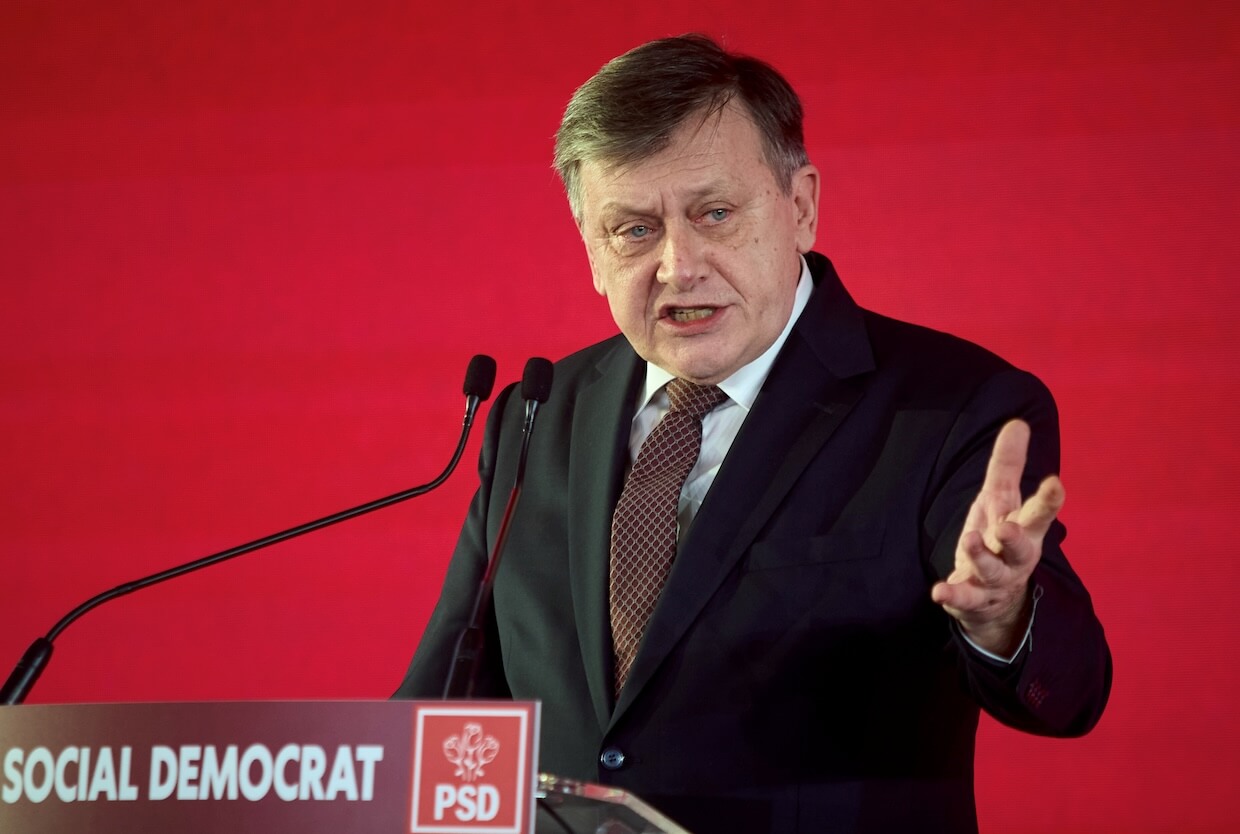
How do you interpret the apparent paradox between widespread socioeconomic grievances and the relative electoral failure of redistributive political platforms, particularly in the light of the Social Democratic Party’s strategic vacillation and policy convergence with the right?
Dr. Vladimir Bortun: That’s the key factor from a subjective perspective. I’ve tried to talk about the objective factors, but in terms of the subjective conditions, clearly the key factor that has facilitated the rise of the far right—not just in Romania, but across the region and beyond—is the lack of a credible left-wing political project.
And the current left party, the center-left party you’ve mentioned—the PSD—is left in name, but not in substance, not in policy. They have actually governed for the majority of these 35 years of neoliberal capitalism—more or less 20 of those 35 years have seen them in government. So, they have implemented some of the very policies I mentioned earlier, which are responsible for the current socioeconomic conditions.
The very minimal social concessions they have made in terms of redistribution while in government have been largely limited to increasing the minimum wage—which is, of course, better than nothing. This partly explains why they remain the most voted-for party in Romania.
However, these measures are far from sufficient. Despite repeated increases over the past six or seven years, the minimum wage remains very low—about 30% below what would be considered a living wage in Romania, that is, the income necessary for a decent standard of living.
Moreover, Romania has the highest share of its workforce earning the minimum wage. Nearly 40% of all workers are on minimum wage—twice the EU average.
So, we are a minimum-wage economy, a low-taxation economy, and a low public spending economy. Romania is pretty much a paradigmatic case of neoliberalism—and the PSD is very much responsible for this. It is arguably the single most responsible political party for this situation.
Proletarians Abroad, Petit Bourgeois at Home
With over 60% of the diaspora backing Simion in the first round, what implications does this have for the dominant narratives that have historically cast diasporic Romanians as liberalizing or pro-European agents?
Dr. Vladimir Bortun: That’s a significant shift indeed! And it started already in 2020, when the party AUR—which, by the way, stands for the Alliance for the Union of Romanians, but the acronym aur also means "gold" in Romanian— from the very beginning targeted its message toward the diaspora. They even called the diaspora “the gold of Romania” that they wanted to bring back to the country.
The party was launched in the diaspora in December 2019, one year before the first elections in which they stood candidates. Their launch meeting took place in the UK, among Romanians living there—not in Romania. So, from the outset, they were oriented toward the diaspora, and they managed to appeal to it in several ways.
On the one hand, this diaspora is not one unified entity; it consists of several diasporas. We’re talking about five million people, which is a quarter of Romania’s total population. They live very different lives in the West of Europe. Some of them live in quite squalid conditions, working very hard jobs for low wages, in poor environments, with little respect and little sense of being treated equally.
There is a widespread feeling among them that Romanians are treated as second-class citizens. Many are temporary or circular migrants—working on a construction site for three or four months, then returning to Romania, or working seasonal jobs picking vegetables on farms in Italy, Spain, the UK, or Germany, and then going back.
They don’t have a favorable context for integration or for deeper socialization in the host countries. But let’s be honest—those host countries themselves have experienced a surge in far-right politics. The far right is now much more mainstream in Western Europe than it was 10 or 20 years ago, when these migrants may have been sending back more liberal kinds of social remittances.
These societies have shifted significantly to the right. Anti-immigration discourse has become more mainstream, normalized, and legitimized—and Romanians living there have internalized some of that discourse.
In my own fieldwork, I often came across people who, despite being migrants themselves and suffering from anti-immigration attitudes and discourse, were nevertheless against other groups of migrants. They distinguished themselves from them—talking about “good migrants” and “bad migrants.” There is a real cognitive dissonance at play here, where migrants adopt anti-migration attitudes and political preferences.
Another aspect is that many feel Romania is a peripheral country that lacks a real voice in the European Union and in the broader global political stage. They perceive Romania as subordinated economically and geopolitically—which is true.
So, when a populist demagogue like Simion comes along and says, “I will make Romania stand tall again in the EU and in the world,” it resonates. It gives them a sense of restored dignity and pride.
Meanwhile, all the other political parties—including the PSD—are utterly uncritical in their allegiance to the EU, NATO, and the West in general. They refuse to acknowledge the real problems Romanians face, both in terms of their living conditions in the diaspora and in terms of Romania’s position within international power structures.
These parties speak only about the benefits and advantages of being part of these institutions, without addressing the contradictions, the challenges, or the structural disadvantages of Romania’s position in the European and international economic and political system. This, of course, creates a window of opportunity for the far right to come in and capitalize on people’s sense of marginalization and humiliation.
One additional point is that many of these migrants, as I mentioned, are circular or temporary migrants. They may be working blue-collar jobs abroad, but they’ve managed to accumulate enough capital to open a small business back home in their town or village of origin. This means they occupy a complex, dual class position: proletarians abroad, petit bourgeois at home. When they return home, after years of hard work abroad to save capital and open a small guesthouse, café, restaurant, or corner shop, they feel the state does nothing for them.
Instead, they feel overburdened by taxation. Increases in the minimum wage are perceived as a burden because they are now small employers who have to pay two, three, or four salaries. They blame the state—but they also blame those below them: people on minimum wage, or on welfare benefits, whom they see as lazy or asking for too much. They see themselves as the real hard-working people who have sacrificed abroad to invest in the Romanian economy—only to be abandoned by the state, which should be protecting their interests.
I think this is very important. I’m not saying it’s unique to Romania, but it is very salient here—and perhaps not as salient a feature in the social base of the far right in other European countries.
A Race to the Bottom Among Migrants
Building on your work on transnational political mobilization, how should we understand the AUR’s success among emigrants in Italy and Spain? Do these cases indicate a diasporic production of illiberal subjectivities shaped by specific host-country political contexts?
Dr. Vladimir Bortun: I think I already touched on this in my previous answer. However, Italy and Spain are particularly illustrative of some of the dynamics I outlined earlier—especially Italy, where the far right has been in power for the past two and a half years.
In that context, migrants often find themselves in a race to the bottom, trying to prove they are more deserving than other migrant groups. I encountered numerous cases of Romanian migrants in Italy—or former migrants who had lived there for many years—expressing very negative attitudes toward Moroccan or Albanian migrants, for example.
Some even told me they had voted for the Northern League, now known as La Lega—Salvini’s party—which was the original far-right populist force before Brothers of Italy surpassed it in popularity. Ironically, this is a party that had made openly anti-Romanian statements in the Italian press. Nevertheless, this became their way of attempting to carve out a place for themselves—by identifying someone “below” them to target as the “bad” migrant.
In Spain, we see a similar surge with the Vox party over the last few years. It is now the third-largest political force in Spain—a country where the far right was outside of Parliament for decades.
Again, we’re talking about a Romanian diaspora that has suffered a lot of discrimination and marginalization. It took a long time for this community to settle. But there is also a split within these diasporas, as I mentioned—between the more settled, integrated diaspora, and the precariously employed, circular, temporary migrants who come and go and who cannot really find a foothold in these countries.
The Center Imitates, but the Far Right Dominates
Comparing Romania’s recent presidential runoff to parallel dynamics in Poland and Portugal, to what extent can we speak of converging or diverging trajectories in the European center-right’s strategy to contain or accommodate far-right surges?
Dr. Vladimir Bortun: I think we see a very strong trend of accommodation of the far right—and not just from the center-right, but also from the center-left. In Denmark, for example—going a bit outside the region—the Social Democratic Party currently in government has adopted one of the harshest anti-immigration policies in Europe. And this trend extends further. Even here in the UK, the Starmer-led Labour Party has adopted many of the talking points not just from the Conservative Party but also from Reform UK. Just the other day, Starmer was speaking about Britain being “a country of strangers,” “an island of strangers” due to mass migration, according to him. Apparently, that makes me a stranger here.
There is a growing body of literature—by scholars like Aurelien Mondon and Aaron Winter—that refers to this as the mainstreaming of the far right: the normalization of reactionary ideas and policies. And this applies not just to rhetoric, but to actual policymaking, with both center-right and center-left parties adopting positions in an attempt to win back voters lost to the far right.
But as the saying goes, “the original is better than the copy.” People who want to vote for the far right for reactionary reasons—because they oppose immigration, for example—are unlikely to switch to the center-left just because it has adopted similar anti-immigration tropes. They will continue to vote for the far right. And we have seen this across the board.
The one Social Democratic party currently in power in Western Europe—in the EU at least—is in Spain. And they have resisted the temptation to go in this reactionary direction on issues like immigration and other topics dear to the far right. On the contrary, in some ways they have been an example of what a progressive government can and should say on key issues of our time, including the atrocities we are seeing in Gaza. They are, of course, not a perfect government—they have many flaws and shortcomings. But they demonstrate that it is still possible to stay true to Social Democratic values and policies and win elections. And that’s just speaking from a pragmatic point of view.
Corruption Isn’t the Cause—It’s the Symptom of a System
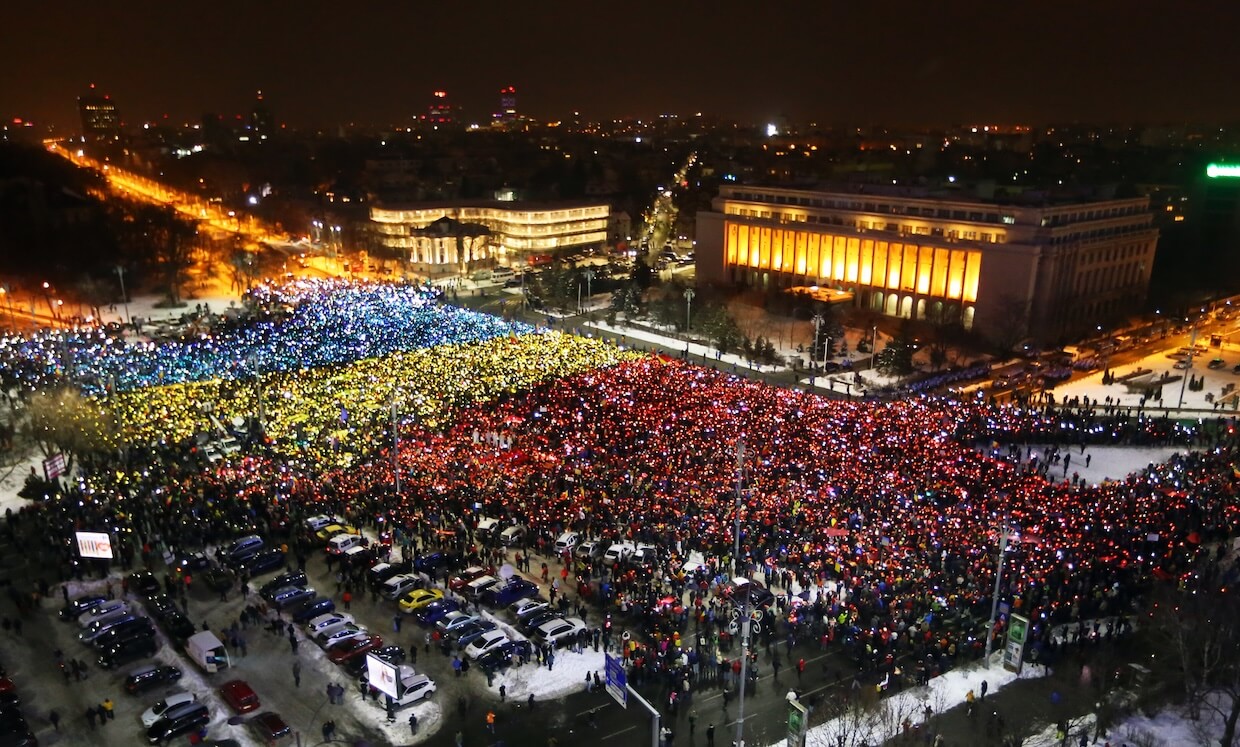
What insights might Romania’s 2025 election offer for understanding the evolving relationship between anti-corruption discourse and far-right populism, especially when contrasted with the cases of Poland’s Law and Justice or France’s National Rally?
Dr. Vladimir Bortun: That’s a very interesting question. I think, on the one hand, the far right’s collusion with corrupt and clientelist practices shows that, after all, they are not such a real alternative to the mainstream parties they criticize. They are quite happy to engage in the same kind of bad politics that the mainstream parties are guilty of.
On the other hand, while corruption is indeed a major issue in Romania—as it is in many other countries—it is often framed in a very legalistic or even moralistic way, as if it’s simply a flaw of character or the result of an inefficient state bureaucracy.
In this sense, corruption is frequently instrumentalized ideologically to justify the further shrinking of the state and additional cuts to public spending. For example, it’s often claimed that there’s widespread corruption in the welfare system—even though Romania already allocates the lowest percentage of its GDP to welfare in the entire European Union.
Nevertheless, this anti-corruption mantra remains highly salient in public discourse.
The anti-corruption discourse has thus been used to legitimize harsh austerity and neoliberal measures. At the same time, when actions are taken against corruption—such as jailing corrupt politicians—they often remain at a superficial, legalistic level.
This approach is ineffective against the far right. In the United States, we saw the democratic establishment spend four years trying to go after Trump through legal channels—and yet Trump still won the election. Le Pen has been barred from standing in elections, and her party continues to grow in the polls. It’s certainly not declining.
In Romania, the Constitutional Court canceled the November election and barred the winning candidate, Georgescu. Yet the person who replaced him—Simion—secured double the percentage in the first round. It didn’t work.
I’m not saying such measures shouldn’t be taken—if there is a legal basis for them, then by all means, pursue them. But we need to recognize that this is not a real solution to tackling the far right.
On the subject of corruption, an important point must be made beyond its ideological instrumentalization. Corruption is a real issue that must be addressed, but it is often decontextualized.
Corruption needs to be understood as a key vehicle for the primitive accumulation of capital—something characteristic of any early stage in the development of capitalism, in any country, at any point in history.
Corruption, along with other violent forms of capital accumulation, has always been present—even in so-called advanced, consolidated democracies that have practiced capitalism for a longer time. Corruption played a massive role in the emergence of capitalism and continues to play a central role in capital accumulation today.
After all, the dirty money of drug cartels, criminal syndicates, and authoritarian regimes around the world is largely laundered through the City of London—the very heart of global capital. So, if we truly want to tackle corruption, we need to go to the root of the problem and understand it as part of a broader structural and systemic issue.
From Democratic Neoliberalism to Its Authoritarian Mutation
Lastly, from a historical-comparative perspective, how does the Dan–Simion runoff recalibrate the ideological field established in the 1990s transition era? Are we witnessing a definitive exhaustion of post-1989 liberal centrism or its tactical reanimation?
Dr. Vladimir Bortun: This is a great question. There have been repeated claims about the death of the neoliberal center over the past 15 years—after the financial crisis, for instance. There were suggestions that neoliberalism was coming to an end, and that we would see a return to a more Keynesian type of economic model. That didn’t happen. Instead, we got more neoliberalism—more austerity, more privatizations, more deregulation, more flexibilization of the workforce.
Then, again, after the COVID-19 pandemic, there were claims that this marked the death of neoliberalism, especially given the forceful intervention of the state to keep societies afloat—or more accurately, to keep the accumulation of capital going. But again, that was temporary. Neoliberalism has returned in full force.
Now we are witnessing the militarization of Europe, with promises of spending cuts on the most important public services in society in order to fund military efforts. So, I’m afraid we are not seeing the end of neoliberal centrism, but rather its transformation into something more authoritarian—still neoliberal, but authoritarian. A shift, if you will, from democratic neoliberalism to authoritarian neoliberalism.
This transformation is being endorsed by the political center, which is increasingly adopting authoritarian measures across Europe. Here in the UK, the so-called center-left government has imprisoned individuals not for taking part in a protest, but simply for holding a Zoom meeting to plan one—specifically, a protest against environmental destruction. They were not punished for blocking a motorway, but merely for discussing civil disobedience in response to the climate crisis. This illustrates a clear shift toward authoritarianism. Yet when it comes to economic policy, there is a striking convergence between centrist parties and the far right.
The far right claims to be an alternative to the status quo and capitalizes on the grievances, socioeconomic anxiety, and insecurity of ordinary people. But if we look at their actual policy proposals—or, in places where they are in power, their actual policymaking—it’s more of the same. They might throw a few crumbs to ordinary people, to the popular classes, in order to maintain their support. But the bulk of their economic agenda still serves the business class and the wealthy—just different factions of the business class and wealthy than those typically represented by centrist parties.


